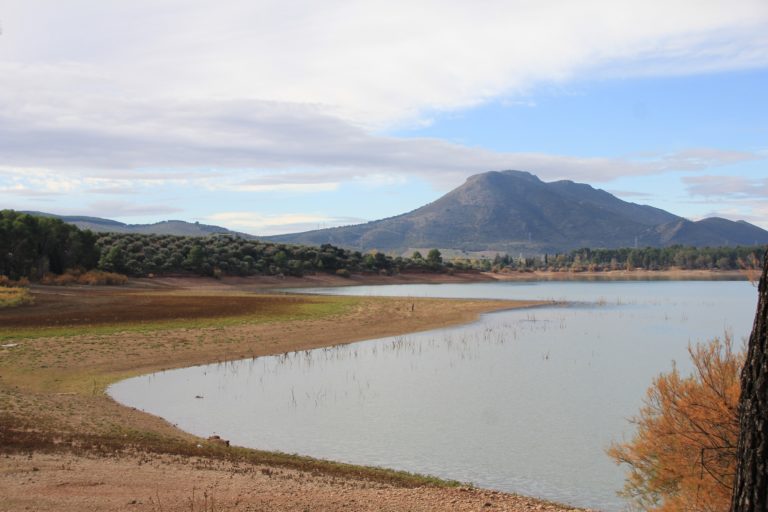
Now that the 2023 winter has ended, Europe is coping with a severe drought that has affected many parts of the continent. After facing the driest summer of the past 500 years in 2022, the prolonged lack of precipitation over the winter has caused concerns among farmers, water management bodies, and policymakers who are struggling to cope with the impacts of the drought. Not only that, but this situation has also exacerbated the conditions for wildfires events to occur.
The winter of 2023 was abnormally dry, characterized by higher-than-average temperatures and significantly lower precipitation levels compared to previous years. Moreover, the insufficient snowfall has resulted in a decrease in the water levels of rivers and lakes, as melted snow typically plays a vital role in replenishing water reserves during the spring season. According to the European Commission’s Joint Research Centre, much of central and eastern Europe have been experiencing prolonged dry spells since November 2022, posing a threat to aquatic life, impacting water availability for agriculture, industry, and households, and even increasing the risk of wildfires.
A map of current droughts in Europe from the EU’s Copernicus programme shows alerts for low rainfall or soil moisture in areas of northern and southern Spain, northern Italy and southern Germany, with almost all of France affected.
what about fire-res living labs?
The FIRE-RES project’s Living Labs in the northern parts of Europe have not experienced dry situations during 2023 winter. The Netherlands and Sweden drought relieved due to winter precipitation, which has allowed groundwater levels to recover. However, it is worth noting that in certain regions of the eastern and southern parts of the Netherlands, groundwater levels remain lower than usual.
The situation is however very different in the Living Lab regions in southern Europe. According to the Hellenic National Meteorological Service, Greece has been confronted with an overall drier climate, especially in February. A similar situation was observed in Galicia for the month of March. As for Catalonia, the region is already experiencing an alarming rise in forest fires, which is unusual for this time of the year. Meanwhile, the water reservoir in the Adour-Garonne basin, which covers the Living Lab in Nouvelle-Aquitaine, is significantly depleted, with current levels only at 46% compared to the same period last year. The situation in Catalonia is equally concerning, with the Sau reservoir’s water level currently at only 6% of its total capacity, compared to 60% at the same time last year. These early and alarming developments have raised concerns about the upcoming summer of 2023, which is expected to be particularly challenging.

Forest fire in Calafell (Catalonia, 14th of March 2023). Source: Generalitat de Catalunya Departament d’Interior Direcció General de Prevenció, Extinció d’Incendis i Salvaments
In Italy, FIRE-RES partner Sergio Pirone, Director of the Advanced Training Centre for Fire Fighting and Civil Protection in Piedmont (Italy), has noted that after such a dry winter the Italian Alps are experiencing a situation that is becoming more similar to that of the Mediterranean region. He has observed a shift in the seasonality of fires, with larger fire events occurring earlier in the season compared to previous years.
He pointed out that this exceptional dry winter has caused a decrease in ground humidity, resulting in the accumulation of dead biomass in deciduous forests. This increase in available fuel has led to high intensity wildfires which are harder to extinguish.
To address this situation, it is important to continue implementing initiatives that reduce the accumulation of fuel, maintain roads, and improve access to water collection tanks among others. By taking proactive measures, we can minimize the risk of fires in the Alps and mitigate their potential impact.
In light of the drought situation in Europe during winter 2023, the southern regions of Europe are at high risk of experiencing dangerous and damaging wildfires during the spring and summer months. This is reminiscent of last year’s situation when drought and fires ravaged Greece, Spain, France, Italy and Portugal. In order to prevent similar situations in the future, sustainable water and land management practices must be prioritized, as part of a broader drive towards making European landscapes more resilient to extreme weather conditions.
In this context, projects like FIRE-RES remain more committed than ever to work with both fire prone and future fire prone regions on the development of innovative Integrated Fire Management strategies. To learn more about FIRE-RES, visit www.fire-res.eu and stay tuned for future project updates.
Author: Elena Feo (Euromontana). Contributors: Christophe Orazio (IEFC), Pau Brunet (CTFC), Cathelijne Stoof (WU), Marius Hauglin (NIBIO), Sergio Pirone (TIEMS)